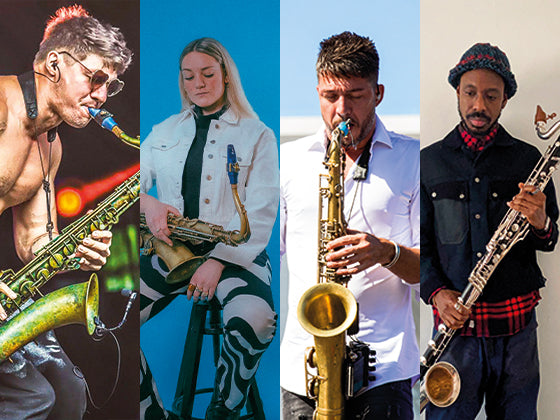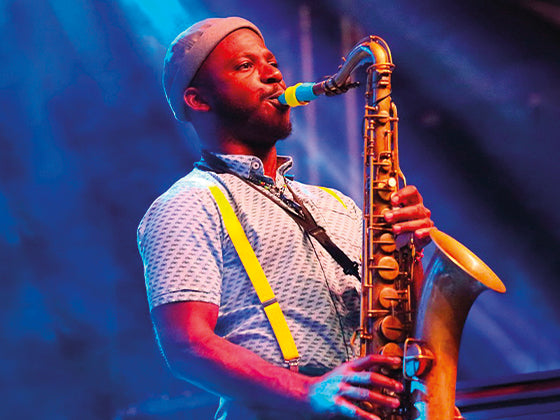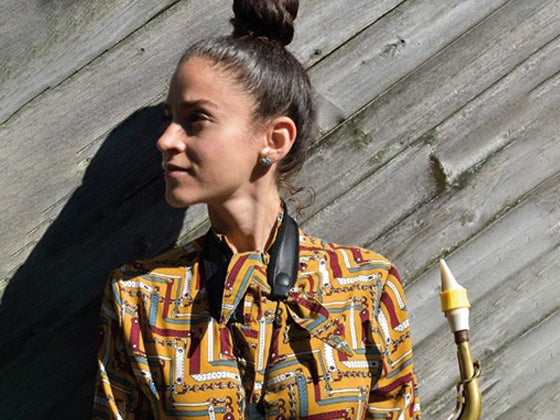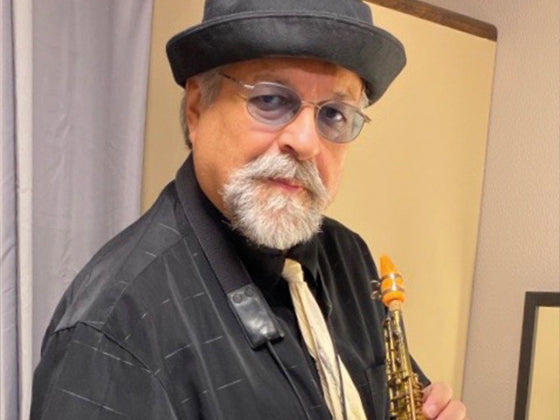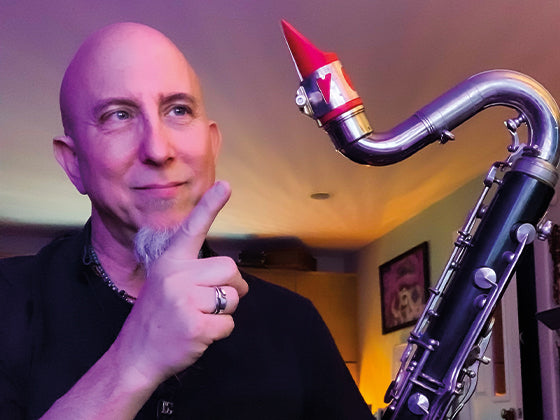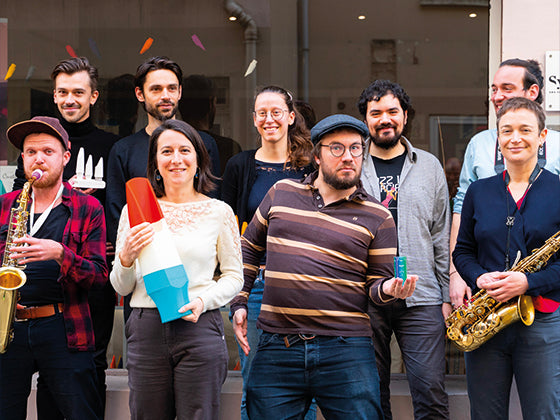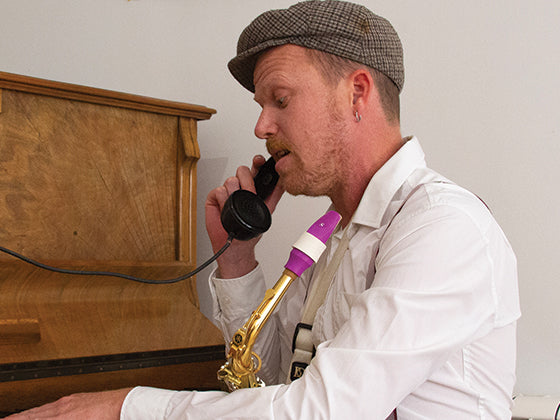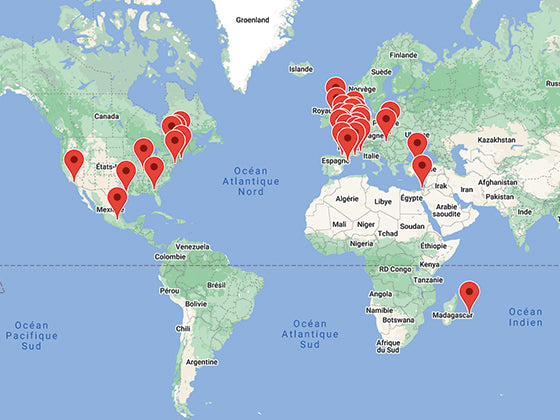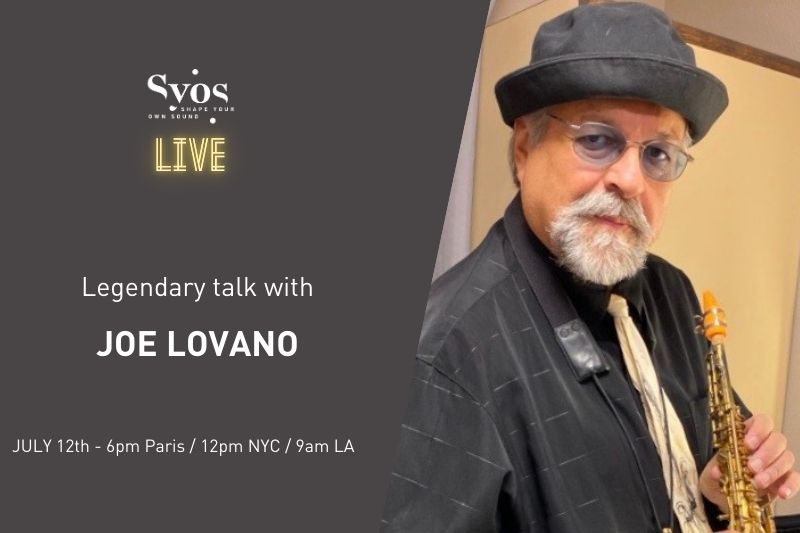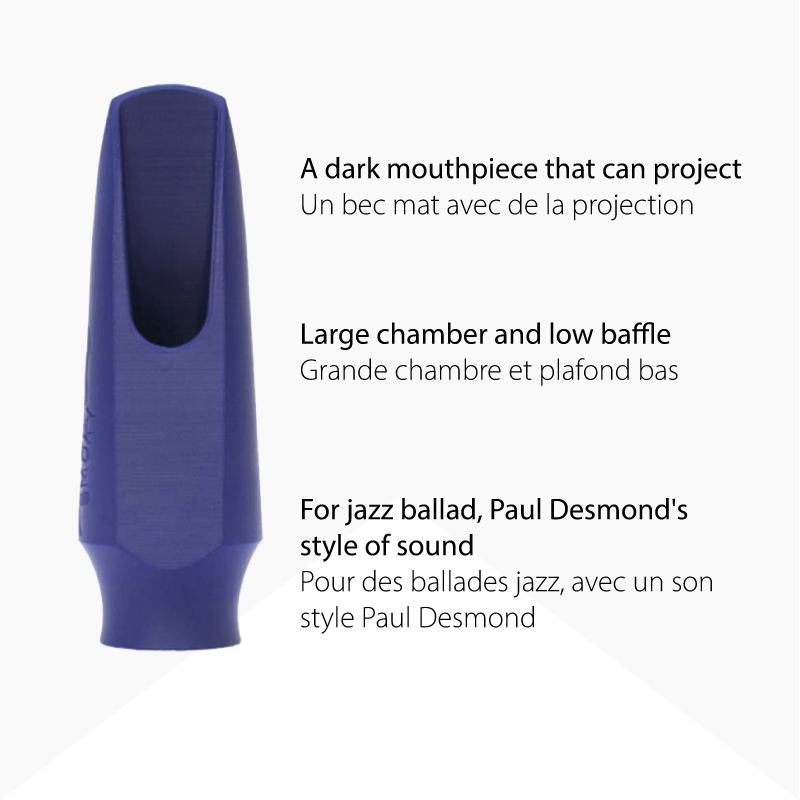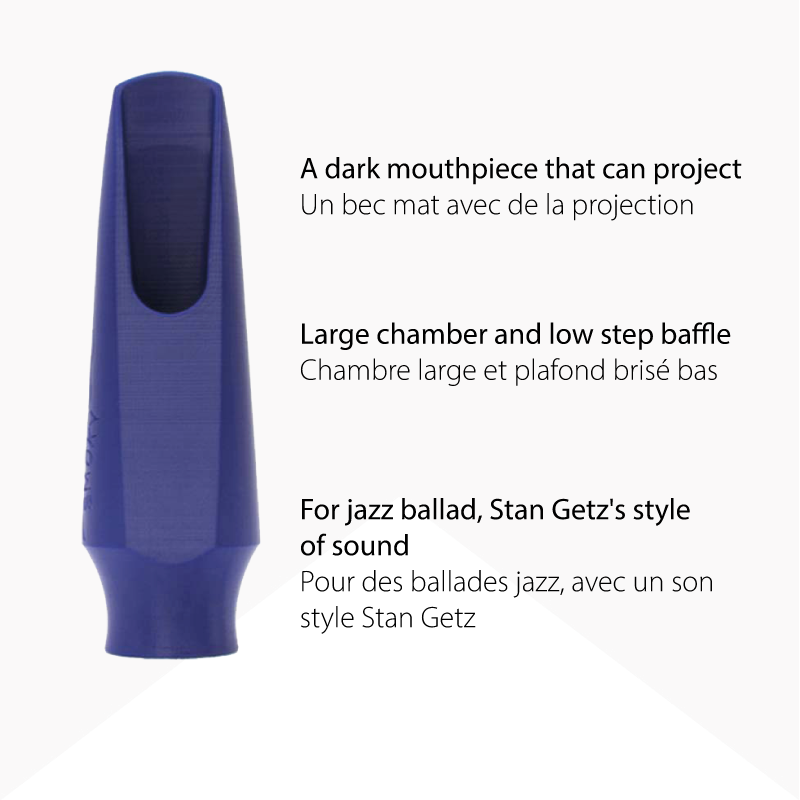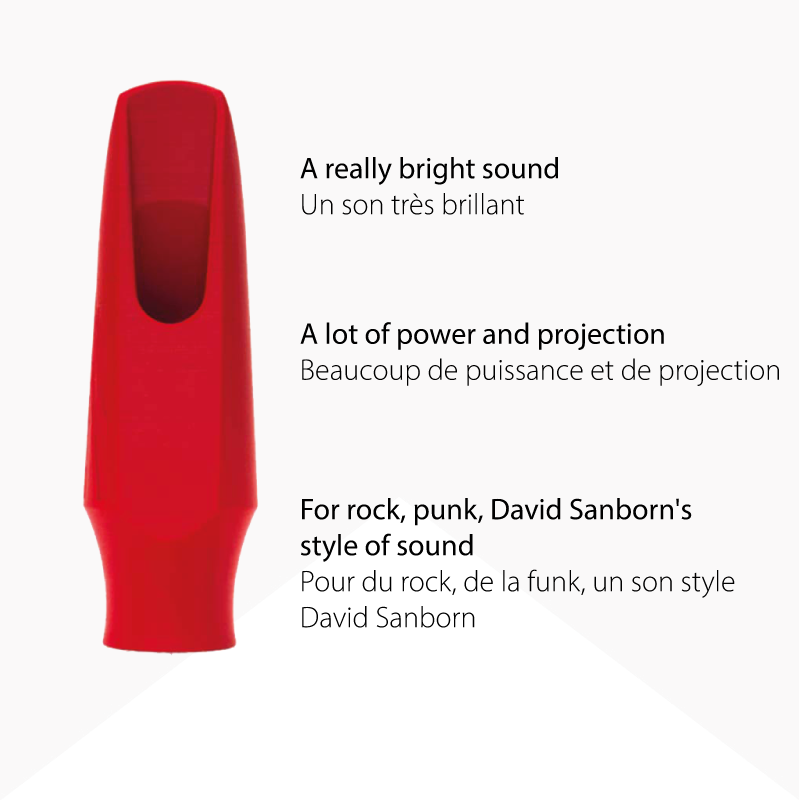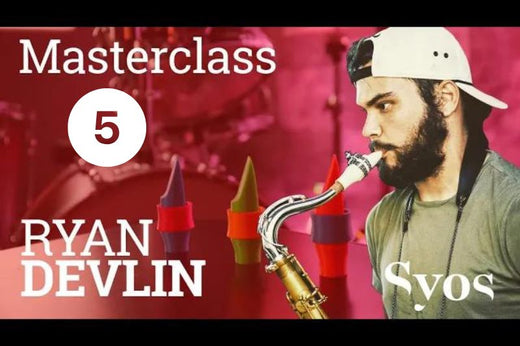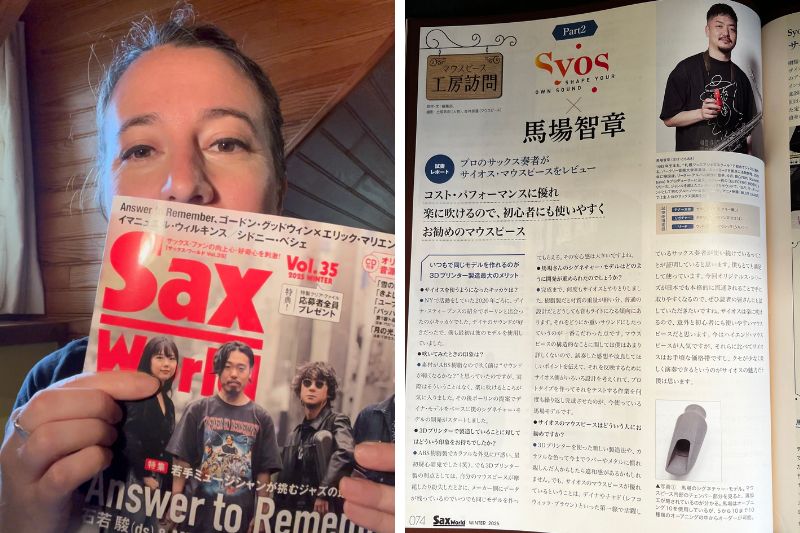Three years ago, we organized some live interviews with Syos artists. Now I would like to share it again with you and I wrote a summary of all the discussion below the video. I hope you enjoy!
Musical Roots and Early Inspiration
Joe Lovano's musical journey began at the tender age of five when his father, a prominent Cleveland saxophonist, first placed an alto saxophone in his hands. Growing up in a home filled with music, young Joe was immersed in the rich traditions of swing, bebop, and modern jazz through his father's playing and extensive record collection. His father's connections to the jazz world ran deep, having shared jam sessions with legends like Gene Ammons and John Coltrane in the early 1950s. These early experiences, from learning to put a reed on a mouthpiece to getting his first tone, formed the foundation of Lovano's musical life.
Formative Jazz Influences
Lovano's early musical education was shaped by his father's impressive record collection, featuring giants like Miles Davis, Charlie Parker, Thelonious Monk, and Max Roach. Learning from these recordings taught him crucial lessons about time, rhythm, and melodic development. His father emphasized the importance of listening, teaching him how to truly hear and internalize what he was listening to. This foundation in active listening helped Lovano develop his understanding of creating melodies within harmonic structures and laid the groundwork for his future musical explorations.
The Berkeley Years
In 1971, Lovano entered Berkeley College of Music, marking the beginning of a relationship that continues to this day. He studied under renowned instructors John LaPorta and Joe Viola, and was selected for Gary Burton's ensemble during Burton's first teaching stint at the school. The Berkeley experience proved transformative, leading to connections with future collaborators like John Scofield, Bill Frisell, and Kenny Werner. Now holding the Gary Burton Chair in Jazz Performance at Berkeley for over two decades, Lovano emphasizes the importance of developing one's own voice rather than merely imitating others.
Evolution as a Recording Artist
Lovano's recording career, particularly his relationship with Blue Note Records, represents a significant chapter in contemporary jazz history. His tenure at Blue Note included three consecutive seven-record deals, resulting in approximately 25 recordings. A standout project was "Rush Hour" with Gunther Schuler, featuring innovative orchestrations for woodwinds, brass, percussion, and strings. His work in the trio format, from "Trio Fascination" with Dave Holland and Elvin Jones to his current Trio Tapestry project, showcases his continued evolution as an artist.
The Power of Trio
When discussing the trio format, Lovano speaks with particular enthusiasm about the unique communication possible between three musicians. His album "Flights of Fancy" explored this concept through four different trio combinations, each bringing out different aspects of his musical vision. He describes the trio setting as providing the perfect balance for deep musical interaction, allowing for what he calls "magic to happen" when three focused musicians breathe and create together.
Saxophone Summit
Around 1998-1999, Lovano collaborated with Dave Liebman and Michael Brecker to form Saxophone Summit, a project inspired by John Coltrane's later period. The group's concept of collective improvisation created what effectively became three quartets within a sextet. After Brecker's passing, the group evolved to include other notable saxophonists such as Chris Potter, Joshua Redman, and Ravi Coltrane, maintaining its spirit of collaborative exploration while developing new directions.
Current Projects and Future Directions
Recent recordings include a new project called "Three as One" with Tyshawn Sorey and Bill Frisell, recorded at the historic Van Gelder Studio. Lovano continues to pursue new collaborations, including planned work with Joey DeFrancesco and aspirations to work with John McLaughlin. These projects reflect his ongoing commitment to pushing musical boundaries while maintaining connections to jazz traditions.
Perspectives on Musicianship
For Lovano, great musicianship transcends technical ability. He emphasizes the importance of developing a personal connection with one's instrument and finding ways to express spiritual depth through playing. His approach focuses on being versatile enough to adapt to different musical situations while maintaining authenticity in one's expression.
Creative Adaptation During the Pandemic
The COVID-19 pandemic period brought new opportunities for musical exploration. Lovano spent significant time performing duets with his wife, singer Judy Silvano, and participated in various livestream events. He developed new compositional approaches, including writing tonalities in sequences without bar lines, leading to pieces like "All as One." This period of introspection and experimentation added new dimensions to his already rich musical vocabulary.
Guidance for Emerging Musicians
Lovano advises young musicians to explore the "inner music" when playing with others, emphasizing the importance of an egoless approach to performance. He stresses the need to transform practice material into natural, flowing expression rather than simply demonstrating technical proficiency. His philosophy centers on developing a personal voice while maintaining deep respect for the tradition.
The Art of Listening
Throughout our conversation, Lovano repeatedly emphasized the fundamental importance of listening in musical development. He shared a powerful experience of listening to Coltrane's 1966 Temple University concert outdoors, describing how the different environment created new insights into familiar music. This approach to active, engaged listening remains central to his musical philosophy and teaching.



